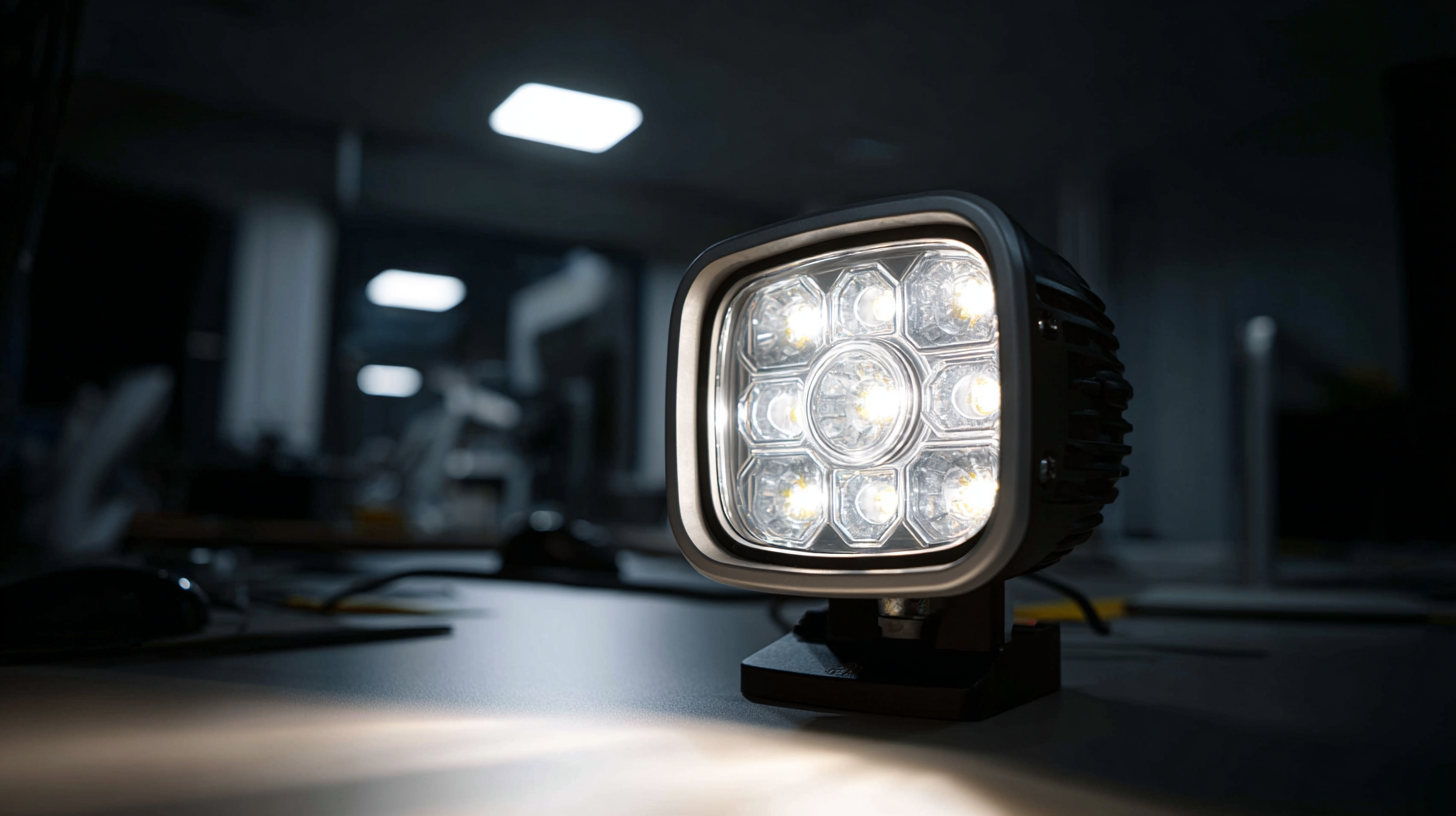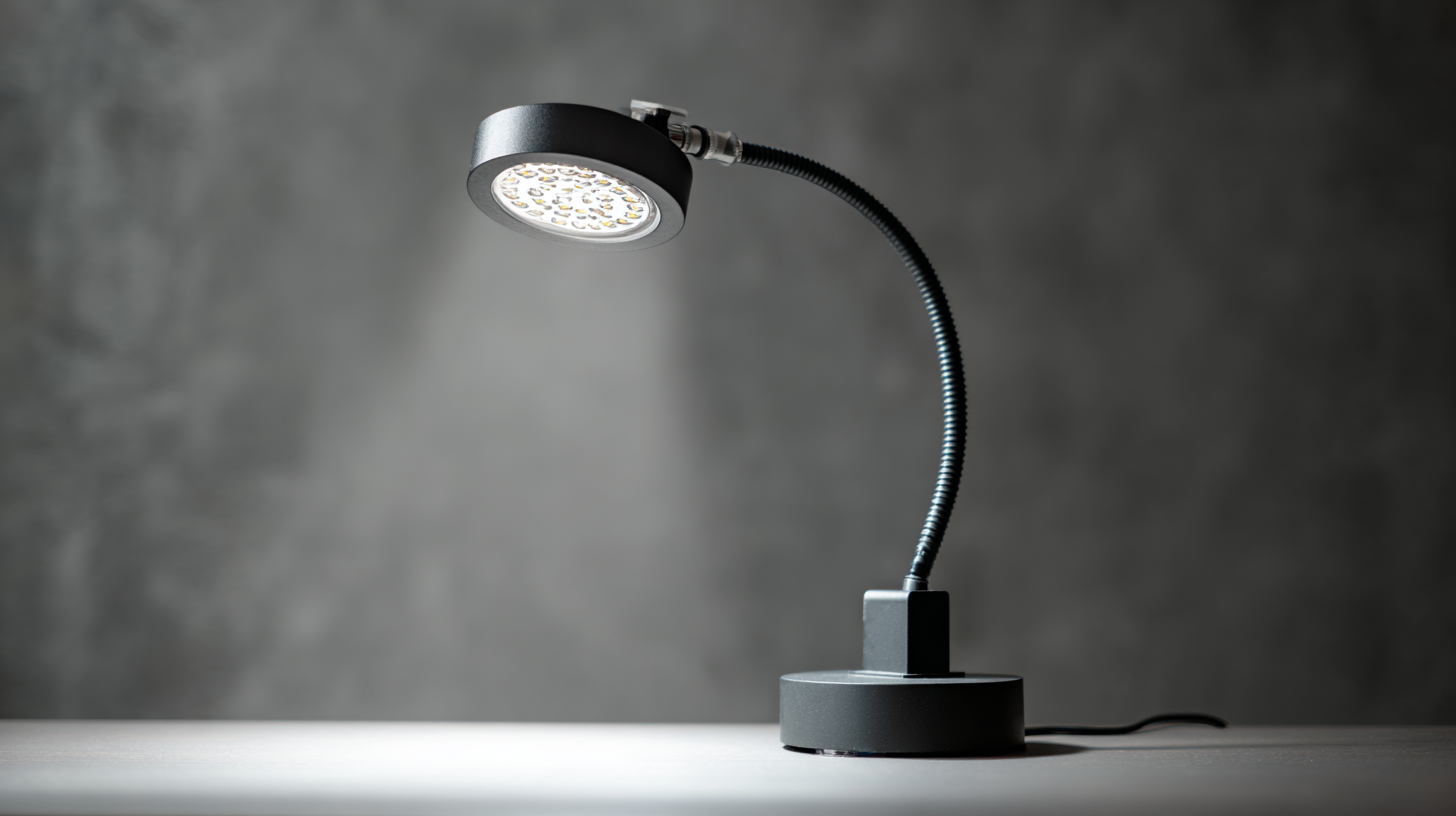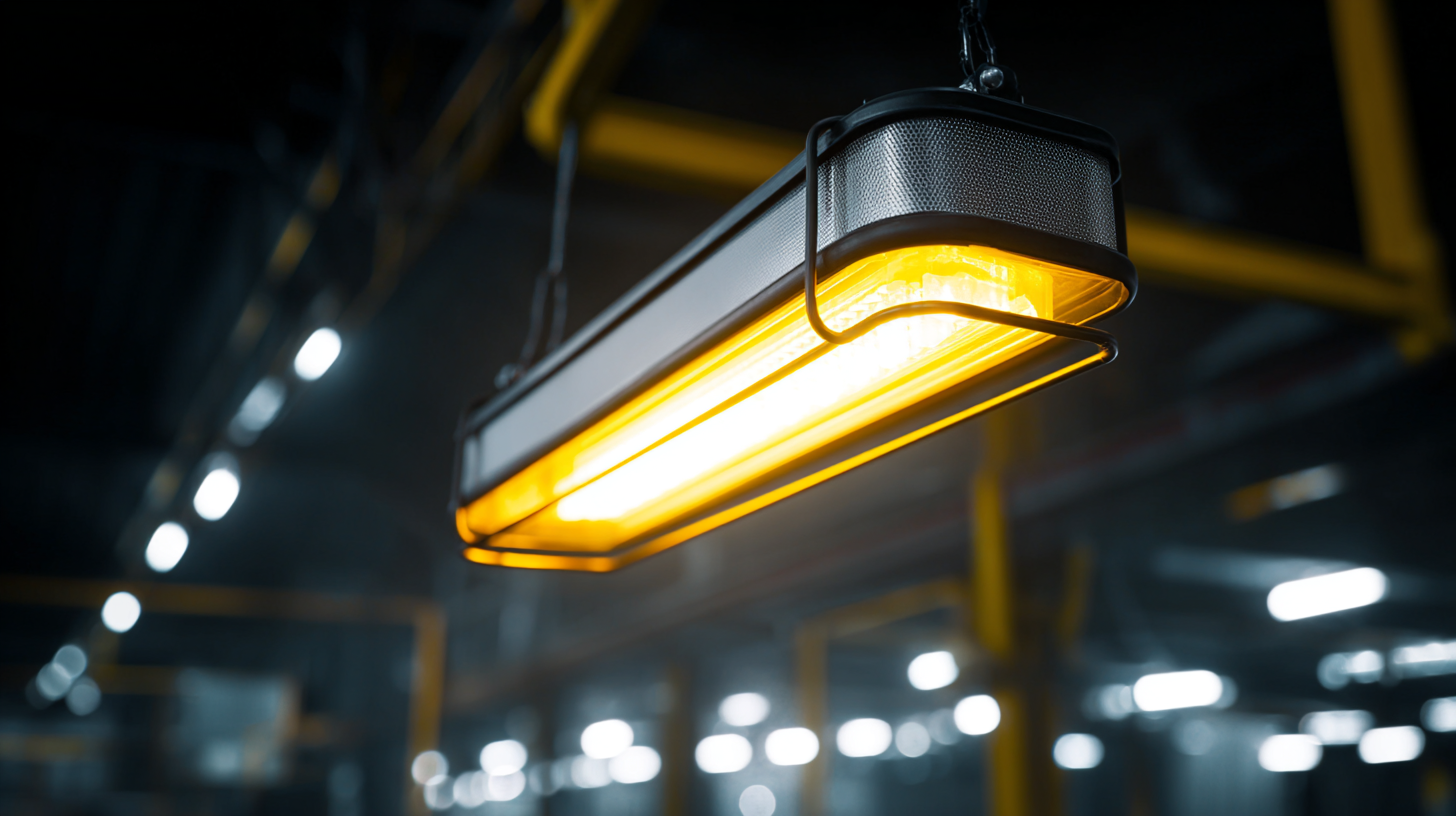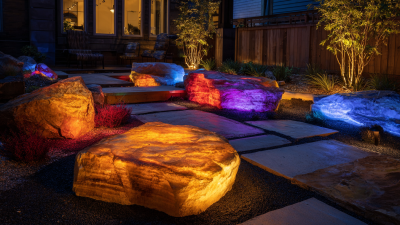Leave Your Message
When it comes to ensuring optimal light efficiency and safety in your workspace, choosing the right LED work lamp is crucial. The right lighting not only enhances visibility but also contributes significantly to productivity and reduces the risk of accidents. With various options available in the market, understanding the key features and specifications of LED work lamps is essential for making an informed decision. This guide will delve into the important aspects to consider when selecting an LED work lamp, including brightness levels, energy efficiency, durability, and positioning. Whether you're working in a commercial setting or tackling DIY projects at home, the right LED work lamp can transform your workspace into a safe and efficient environment, enabling you to work smarter and with greater peace of mind.

When choosing the right LED work lamp for your workspace, several key factors contribute to optimal light efficiency and safety. One of the foremost considerations is the color temperature of the lamp, which affects the ambiance and visibility in your workspace. A higher color temperature (above 4000K) offers bright white light that can enhance focus and reduce eye strain, particularly in environments that require precision tasks. Recent health guidelines emphasize the importance of using appropriate lighting to prevent visual discomfort, especially at night, when using natural light is not an option.
Another critical aspect to consider is the lumen output of the LED work lamp. The market is projected to reach a value of approximately $75,918.2 million by 2025, indicating an increasing demand for efficient lighting solutions. High lumen output ensures that your work area is well-lit, reducing the chances of accidents during operations. Moreover, advanced features such as adjustable brightness levels and integrated safety technologies can further enhance the usability and efficiency of these lamps.
Lastly, the longevity and energy efficiency of LED work lamps are significant factors. The shift towards LED lighting solutions reflects a broader trend in the industry, with a projected compound annual growth rate of 2.5% from 2025 to 2033. Investing in durable, energy-efficient LED lamps not only supports environmental sustainability but also contributes to long-term cost savings in your workspace. By paying attention to these key factors, you can select an LED work lamp that promotes safety, efficiency, and comfort in your working environment.
| Feature | Description | Consideration |
|---|---|---|
| Lumens Output | Total quantity of visible light emitted by the lamp. | Higher lumens mean brighter light; choose based on workspace size. |
| Color Temperature | Measurement of the light's warmth or coolness, expressed in Kelvin (K). | Choose between warm white (~3000K) for comfort or cool white (~5000K) for alertness. |
| Energy Efficiency | Amount of light generated per watt consumed. | Look for lights with higher efficiency ratings to save on electricity. |
| Dimming Capability | Ability to adjust brightness levels. | Consider if you need varied lighting for different tasks. |
| Durability | Resistance to impact, moisture, and other environmental factors. | Select lamps rated for the specific conditions of your workspace. |
| Portability | Ease of moving the lamp around the workspace. | Look for lightweight designs or integrated handles for transport. |
| Safety Features | In-built features to minimize electrical or fire hazards. | Choose lamps with safety certifications and cool operating temperatures. |
When selecting the right LED work lamp for your workspace, it is essential to understand the different types available and their applications. The LED work lamp market is rapidly expanding, with a projected value of $5.6 billion by 2030, reflecting a compound annual growth rate (CAGR) of 6.0% from 2024. This growth can be attributed to the increasing demand for energy-efficient lighting solutions across various sectors, including commercial and industrial facilities.
Among the different types of LED work lamps, you have options such as standard LED lamps and smart LED lamps. Standard LED lamps provide reliable illumination for general tasks, while smart LED lamps offer advanced features like dimming and remote control capabilities, enhancing their usability in dynamic work environments. Additionally, understanding the battery types—such as nickel-cadmium (NiCD) and nickel-metal hydride (NiMH)—is crucial, as these elements impact the lamp's performance and longevity in specialized applications.
With the global flashlight market projected to reach $1.59 billion by 2034, it is clear that portable and battery-operated lighting solutions are gaining traction. As the market continues to grow at a CAGR of 5.8%, the importance of selecting the right LED work lamp becomes even more pronounced, especially to ensure optimal light efficiency and safety in your workspace.
When selecting an LED work lamp for your workspace, understanding light output and color temperature is crucial for maximizing efficiency and safety. Light output, measured in lumens, directly impacts how well you can see tasks at hand. A higher lumen output is essential for detailed work, reducing eye strain and enhancing productivity. For instance, environments with intricate tasks like assembly or repair work benefit from lamps with high lumens, as they provide the bright illumination required to minimize mistakes and ensure accuracy.

Color temperature, measured in Kelvin, plays a significant role in how we perceive light and can influence our mood and alertness within the workspace. Cooler color temperatures (5000K to 6500K), which mimic daylight, are ideal for active settings as they promote focus and energy. Conversely, warmer color temperatures (2700K to 3000K) create a more comfortable and relaxed atmosphere that is suitable for environments where detail work is less critical.
By choosing the right combination of light output and color temperature, you can create a workspace that not only enhances productivity but also prioritizes safety, ensuring that all tasks can be performed with confidence.
When selecting LED work lamps for hazardous environments, safety features should be at the forefront of your decision-making. According to the National Fire Protection Association (NFPA), nearly 22% of workplace injuries are attributed to inadequate lighting conditions, which can lead to accidents in settings where workers are exposed to hazardous materials. It is crucial to prioritize features such as explosion-proof certifications, which ensure that the lamp can withstand corrosive environments. Look for products that meet the ATEX or IECEx standards, which certify that the lamps are safe for use in potentially explosive atmospheres.
Another vital aspect is the lamp's durability and resistance to impacts or extreme temperatures, especially in industrial settings. The American National Standards Institute (ANSI) emphasizes the importance of using impact-resistant materials in work lamps to prevent shattering and potential injuries. Additionally, features like adjustable brightness levels and color temperature options can enhance visibility, significantly reducing eye strain and improving overall safety. By focusing on these safety features, you can choose an LED work lamp that not only provides optimal light efficiency but also ensures a safer working environment for your team.
Maintaining your LED work lamp is essential for ensuring long-term performance and optimal light efficiency in any workspace. According to a report by the Department of Energy, proper maintenance can extend the lifespan of LED fixtures to over 50,000 hours, which is significantly longer than traditional incandescent bulbs. To achieve this, it's crucial to regularly clean the lenses and reflectors, as dust and debris can significantly reduce light output. A simple cleaning routine every few months can help in maintaining brightness and efficiency, ensuring that your work environment is always well-lit and safe.

In addition to cleanliness, temperature control plays a vital role in the performance of LED work lamps. The Energy Efficiency & Renewable Energy report highlights that keeping the operating temperature within the manufacturer’s recommended range can prevent premature failure. It's advisable to check for overheating and ensure that your lamp has adequate ventilation. Moreover, using high-quality fixtures with built-in thermal management systems can help mitigate heat-related issues. By investing in proper care and installation, you can maximize both the longevity and safety of your LED work lamp, making it a reliable asset in your workspace.






